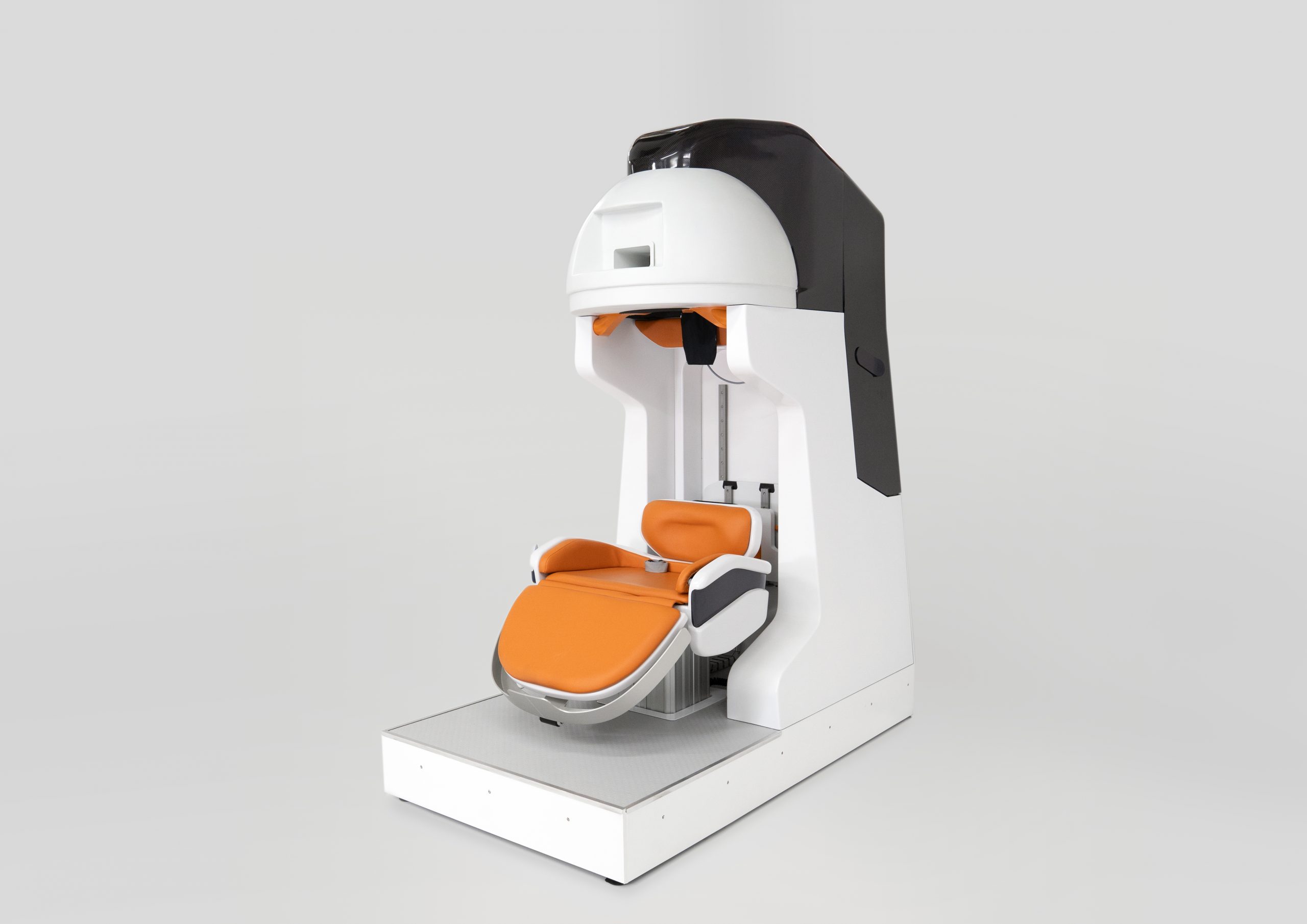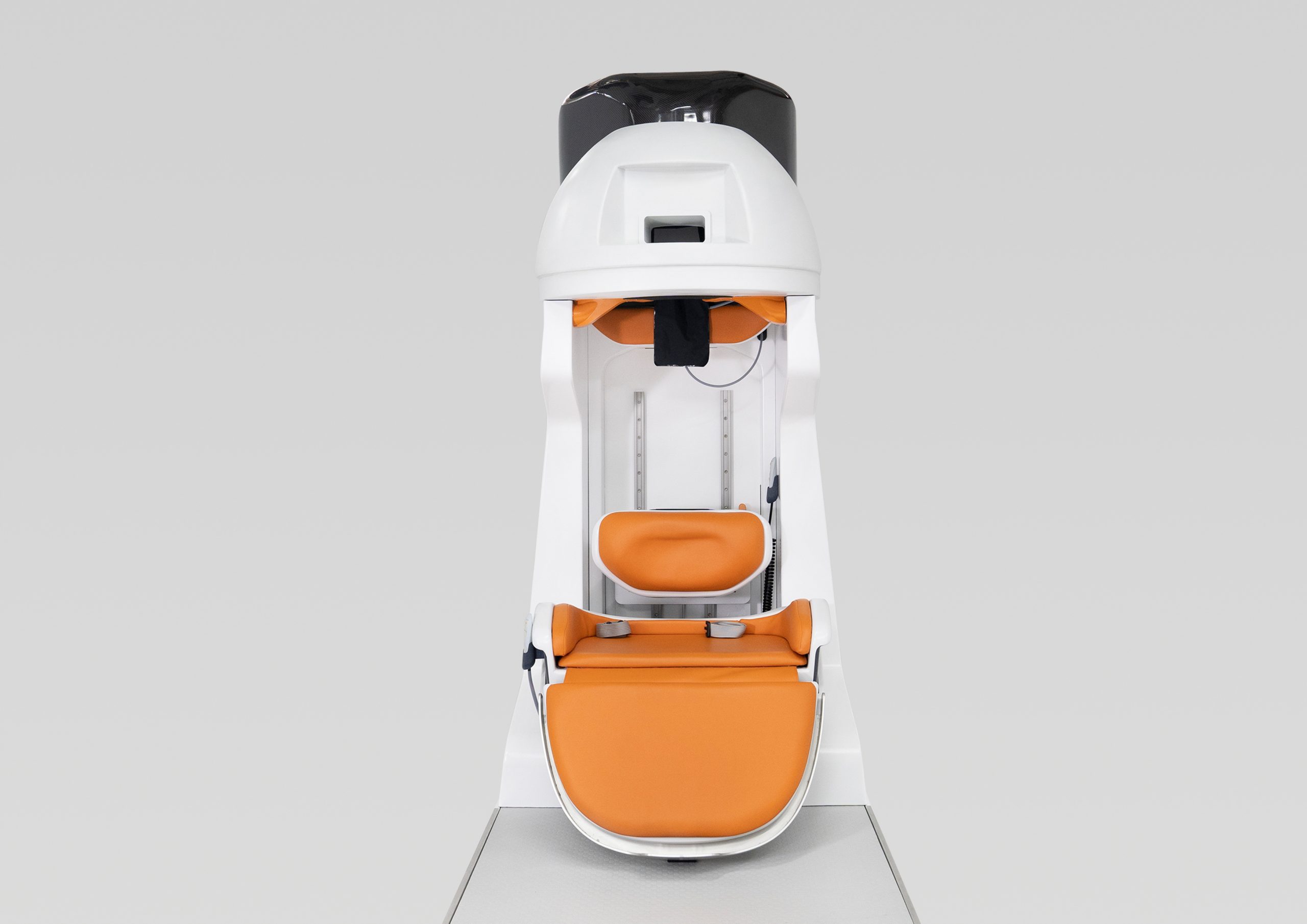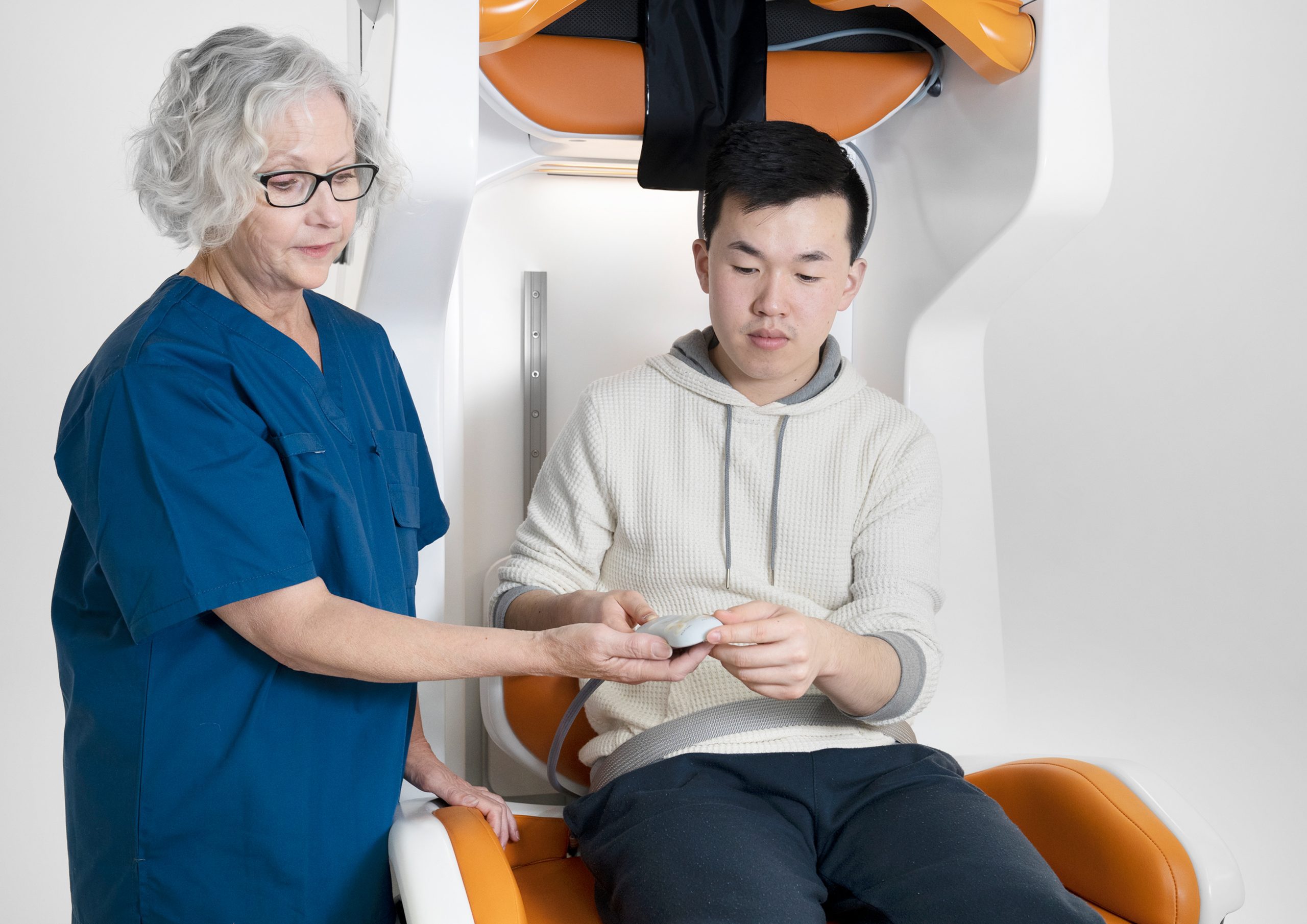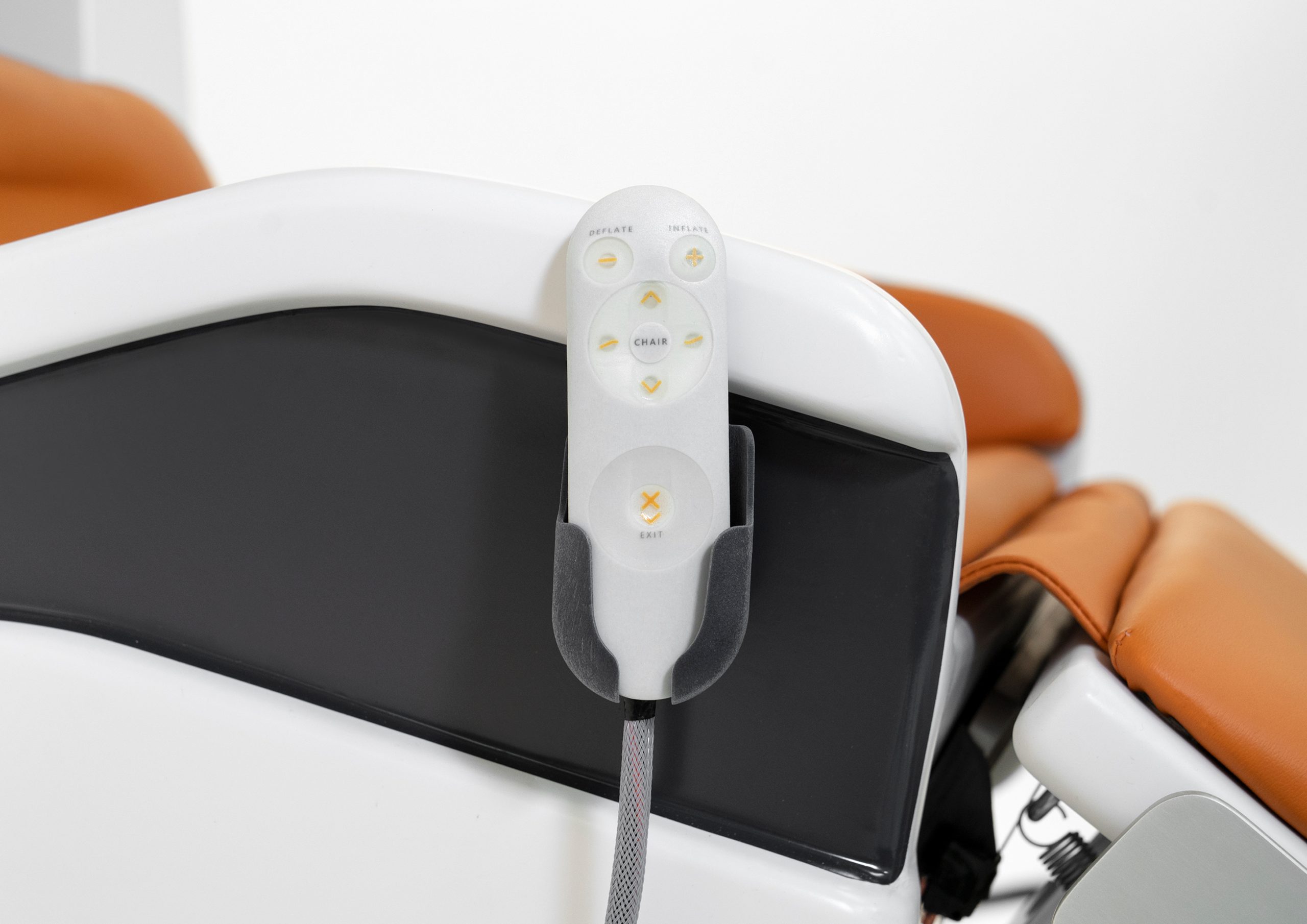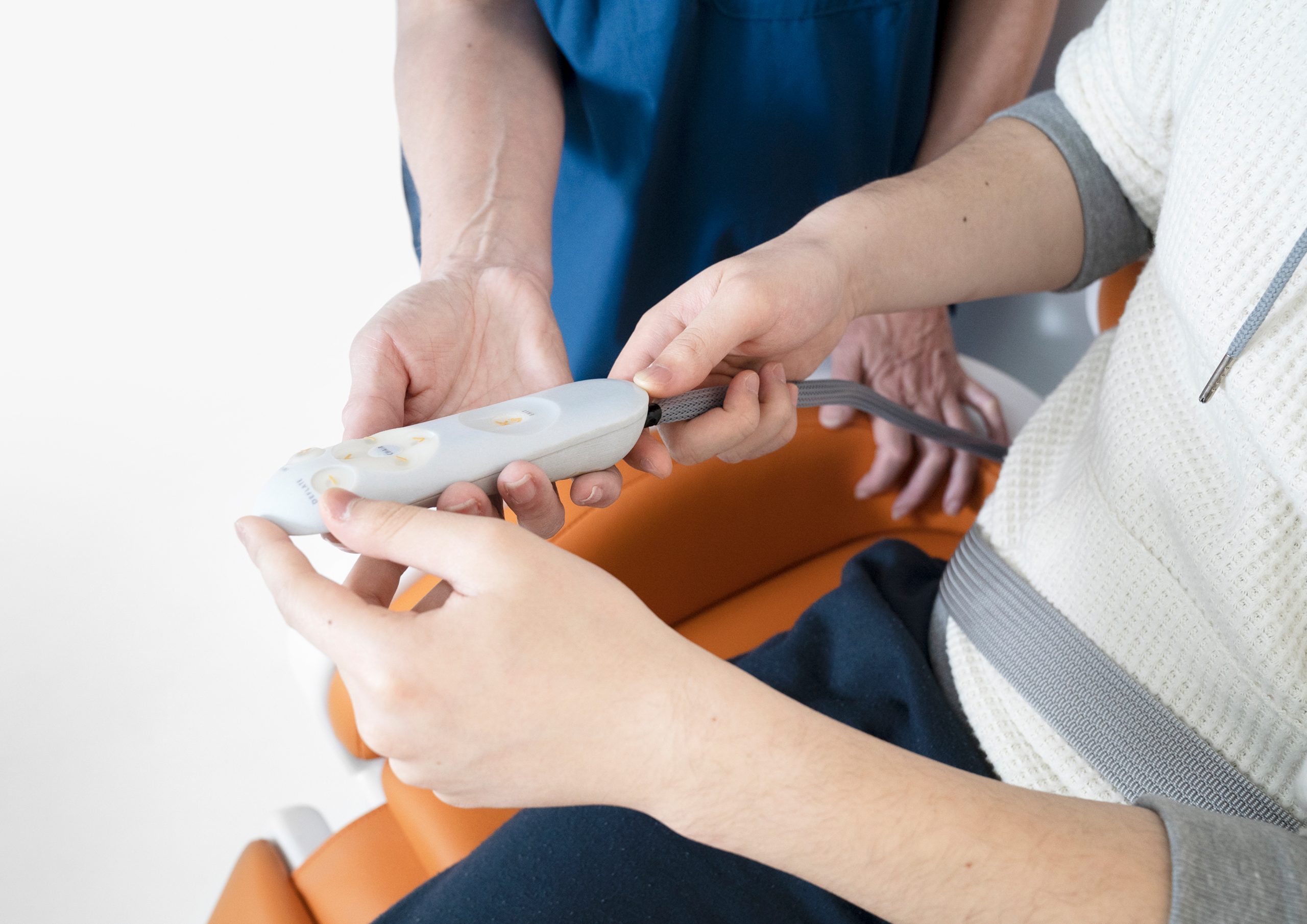MRI system
Magnetic resonance imaging (MRI) is a non-invasive imaging technology used for diagnosing or examining the human body including the brain. Currently, the infrastructural requirements, portability and cost of MRI scans limit access to this technology. For patients, the scan with an MRI scanner can cause stress. A feeling of lack of control over the situation has been pointed out as a main source of the negative patient experience.
This work is part of a multinational project to develop a new head-only MRI scanner led by the University of Minnesota in the USA. The new MRI scanner includes a compact superconducting magnet design and significantly reduces overall power consumption, infrastructure and space needed to support the system. The design and UX is based on “human-centred design” to determine and incorporate clinical and user requirements. The final prototype allows a seated position and contributes to a feeling of control due to allowing the patient to control the patient positioning elements.
As part of the project I helped develop the final patient handling system consisting of the overall design, moveable seat element as well as the inflatable head support design, We used a human-centred design approach to develop and refine the different elements including the user experience of the final prototype.

